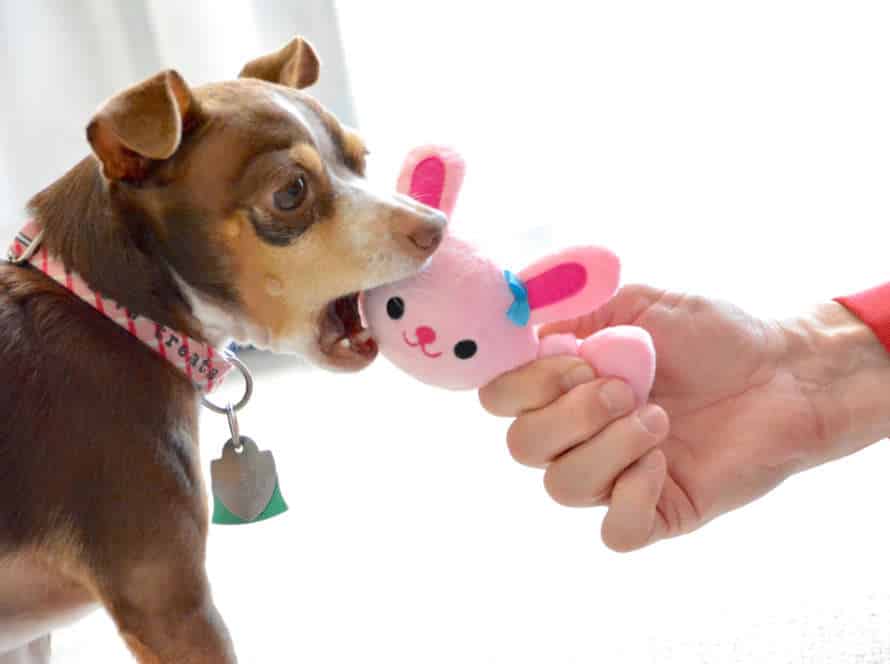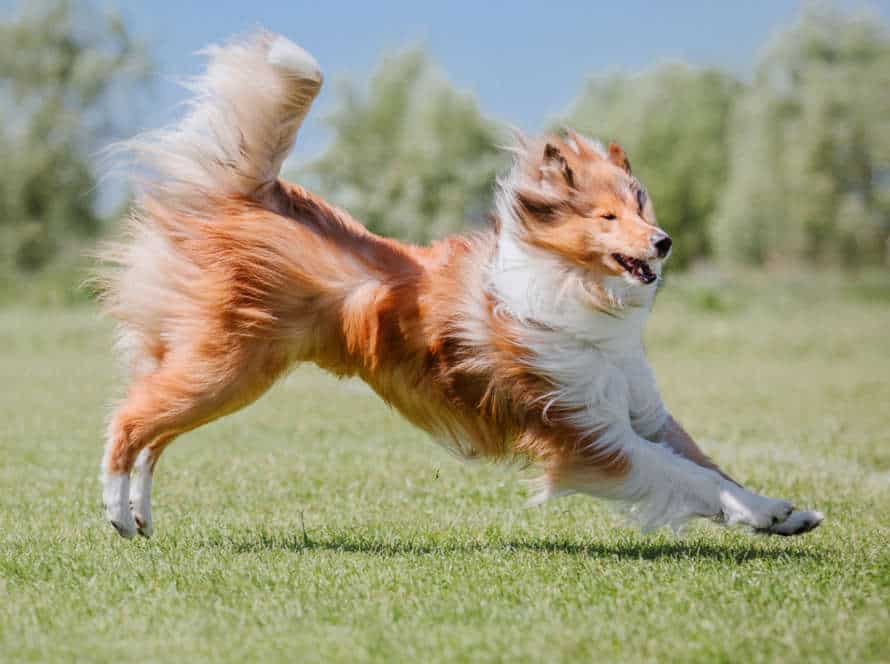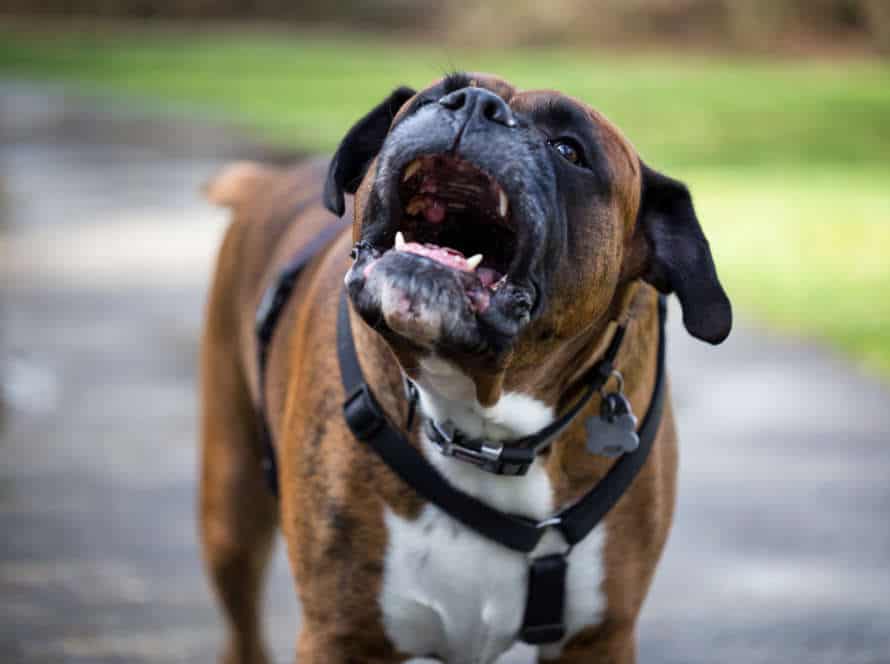The Power of Positive Reinforcement in Redirecting Digging
Positive reinforcement is a powerful tool you can use to keep your pup from digging. Rather than punishing or using negative reinforcement, reward desired actions. Here’s how to use positive reinforcement to redirect digging:
- Make an appropriate spot for digging in your yard.
- Get your dog to explore and dig in the area with treats, praise, and toys.
- If they dig in the right spot, give them a treat or toy, plus lots of positive reinforcement.
- If your pup starts to dig in the wrong spot, direct them to the designated area. And reward them when they start digging again.
Your pup will eventually understand that digging in the designated spot earns rewards and good attention. This will reduce unwanted digging behavior.
Understanding the Digging Behavior in Dogs
Digging is a natural thing for dogs. But it can be a problem for owners. Punishment is often used, but it’s not good for the dog. Positive reinforcement is a better way to change digging behavior. So, let’s look at the behavior and how positive reinforcement works.
Why Do Dogs Dig?
Digging is common in pups. Reasons can vary from instinct to boredom, or maybe they need attention. To manage this behavior, use positive reinforcement!
Here are some reasons why dogs dig:
- Instinct – like terriers bred to catch small animals in burrows.
- Boredom – if left on their own for too long.
- Temperature – dogs dig for a cool spot during summer.
- Anxiety – when feeling anxious, dogs can dig.
To redirect, provide a digging area with soft soil or sand. Use treats and praise to encourage them to dig there. Also, entertain your pup with activities like walking, playing fetch, or puzzle toys. Remember, be patient and consistent, never punish. Positive reinforcement is the most effective and humane way.
Identifying the Root Cause of Digging Behavior
Digging is common in dogs. It can be a sign of something else. Here are some reasons and tips to address them:
- Boredom or energy: Dogs with too much energy might dig for fun. To help, give them exercise, activities, and mental stimulation.
- Seeking comfort or escape: Dogs might dig for cool spots or away from uncomfortable situations. Provide a comfy resting spot.
- Hunting instinct: Breeds like terriers might dig due to a hunting instinct. Provide toys, games, or activities that simulate hunting.
Positive reinforcement can help, too. With patience and consistency, you can teach your dog to dig in only certain areas or use other ways to direct their energy.
Different Types of Digging Behavior in Dogs
Digging is a common behaviour for dogs and can be caused by many different things. These include boredom, curiosity, anxiety, hiding things, or even just exploring.
Pet owners should know about the different types of digging behaviour in dogs:
- Comfort digging – when a dog digs a hole to escape the heat.
- Hunting digging – when they are searching for food such as insects or rodents.
- Playful digging – when they want to play and release energy, especially puppies.
- Anxiety digging – when they are feeling stressed or anxious due to separation, loud noises, or new surroundings.
- Territorial digging – to mark their territory and create boundaries.
To address this behaviour effectively, it is important to know the cause. Positive reinforcement techniques, such as providing a designated digging area and rewarding good behaviour, can help to prevent destructive digging.
Negative Reinforcements for Digging: Why They Don’t Work
Positive reinforcement is a better way to redirect digging than negative reinforcement. It encourages good behavior and discourages bad. Negative reinforcement, however, uses punishment or unpleasant stimuli. It might look good in the short-term but it is bad in the long run. Let’s now explore why negative reinforcement is not as effective as positive reinforcement in redirecting digging.
Punishment-Based Techniques for Reducing Digging Behavior
Negative reinforcements, like yelling, scolding, or shock collars, are not effective and can even worsen the problem of digging. Positive reinforcement is the key to redirecting it! Here’s how:
-
Set up a special area for your dog to dig in. Reward them with treats when they use it.
-
Praise your pup when they dig in the right spot.
-
If they start digging somewhere else, gently guide them to the designated area and reward them when they go there.
Positive reinforcement is a great way to train your dog without causing harm. It will help them learn to direct their digging behavior in a healthy and compassionate way.
Adverse Effects of Punishments on Your Four-Legged Friend
Punishing your pup for digging is not the way to go! Yelling, smacking, or spraying water on them won’t fix the problem. This can make them scared, anxious, and even aggressive.
Positive reinforcement is the way to go instead! Give your doggo a designated spot where they can dig, like a sandpit. Praise and treats when they use it will reinforce good behavior, plus strengthen your bond.
It’s important to remember that dogs respond best to positive reinforcement and patience. Avoid punishing them and use verbal cues, treats, and playtime as a reward for good behavior.
Demerits of Punishment-Based Approaches, and Their Effectiveness in the Long Run
Punishment-based approaches to stop behaviors like digging can have serious consequences and may not work long-term. Negative reinforcement can stop your pet from digging temporarily. However, this can lead to anxiety, fear and aggression, causing more issues.
A better way is positive reinforcement. Give treats, compliments and affection when they behave as you want. This will make them more likely to do the right thing.
Pro tip: To keep your dog from digging where you don’t want them to, make a special area for it. Reward them when they use it.
Positive Reinforcement Techniques: How They Can Help
Positive reinforcement is a great training tool! It helps dogs to stop digging. Rewards, like food, toys or praise, are given when the dog behaves how you want. This shows them they’ll get something nice if they do what you want. Want to learn more? Let’s explore how positive reinforcement can help with redirecting digging behavior.
What Positive Reinforcement Is
Positive reinforcement is a behavior modification technique that involves rewarding a desirable behavior. It can be effective when training dogs, especially to stop digging. Here are some positive reinforcement techniques:
- Treats: Offer your dog their favorite treat when they don’t dig the garden.
- Praise: Tell them “good boy” or “good girl” to reinforce good behavior.
- Playtime: Give them playtime with their favorite toy as a reward.
- Redirecting: Move them to a designated area where it’s okay to dig.
By using positive reinforcement, you can train your dog, and build a strong connection.
Reward-Based Techniques for Reducing Digging Behavior
Dogs often dig, which can be annoying for pet owners. But, you can redirect this behavior with positive reinforcement. Here are reward-based techniques to help:
- Train your dog the “leave it” command and reward when obeyed.
- Choose a spot in your yard where your dog can dig. Reward them when they dig there.
- Give your pup enough exercise and mental stimulation to stop boredom – boredom can lead to digging.
- Use positive reinforcement to reward good behavior and redirect bad behavior, without punishment.
By doing this, you will strengthen your bond with your dog and improve their behavior in a humane way.
Benefits of Positive Reinforcement, and How It Affects Your Dog’s Psychology
Positive reinforcement is a great tool for dog training. It creates long-term effects and strengthens the bond between pet and owner. It works by rewarding wanted behavior and ignores or redirects bad ones. Here are some advantages of positive reinforcement:
- It builds trust and respect. Dogs understand that good behavior leads to rewards and praise. They feel safe and secure around their owners.
- It has lasting effects. It’s more successful in creating long-term behavior changes than punishment-based methods. Training is fun and stress-free.
- It encourages problem-solving. Positive reinforcement boosts a pup’s self-assurance and mental agility. For instance, when a dog is digging, the owner can redirect the pup’s focus and reward them for the desired behavior. This will eventually eliminate the digging habit.
Applying Positive Reinforcement in Redirecting Digging
Digging can be a nuisance for pet owners. It can damage plants, furniture, and create dangerous holes in the ground. But, don’t worry! Positive reinforcement has been verified as an effective method of redirecting this behavior. Let’s explore how to apply positive reinforcement and what other alternatives are available.
Basic Steps for Implementing Positive Reinforcement Techniques
Positive reinforcement is a powerful way to change your dog’s digging habits. Here are the steps for using it:
- Spot the correct action: Watch your dog and see what actions you want him to do more of. For example, when he starts digging in the right spot, give him treats and compliments.
- Pick a reward: Choose something your pup loves, like treats or playtime, and use it regularly to reward the wanted behaviour.
- Quick rewards: It’s key to give positive reinforcement immediately after the wanted behaviour happens. This helps your dog know which bits are encouraged and which aren’t.
- Stay consistent: Stick to the same plan, giving positive reinforcement every time the desired behaviour appears.
Do these steps and you’ll be able to successfully use positive reinforcement to redirect your dog’s digging. Pro tip: Use a clicker to reinforce good behaviour and make a strong link between the sound and positive reinforcement.
Practical Examples of Positive Reinforcement Techniques in Reducing Digging Behavior
To decrease a dog’s digging, one practical approach is to shift their attention away from digging. Here are 3 positive reinforcement techniques to do this:
- Build a digging pit. Put a special spot in your yard where your pet is allowed to dig. Put some toys there to make it fun. Whenever you catch them digging elsewhere, redirect them to the digging pit. Offer verbal praise, treats or playtime as rewards.
- Offer alternate activities. If your dog digs from boredom or stress, give them alternatives like puzzles or catch. When they do this, reward them with treats and praise.
- Spend more time with them. If loneliness or lack of stimulation is why your dog is digging, give them companionship and social interaction. When you spot them not digging, reward them verbally, with petting or a treat.
These positive reinforcement techniques can help focus your pup on desirable behaviors and reduce their digging. Tip: Stay consistent when rewarding them to get the most out of the training.
Ensuring Proper Reinforcement: Dos and Don’ts
Positive reinforcement is a powerful tool for redirecting a pup’s digging from undesired areas to more appropriate ones. To apply it successfully, remember the following:
Dos:
- Give high-value treats and timely praise when the pup digs in the desired area.
- Use redirection techniques such as toys and attention to encourage the dog to dig where it should.
- Apply the same reinforcement techniques consistently for a strong connection between behaviour and reward.
Don’ts:
- Don’t punish or use negative reinforcement for undesired digging.
- Don’t reward undesired digging as this causes confusion and takes longer to train.
- Avoid inconsistent techniques or stopping the pup from digging altogether; redirecting is better than suppressing.
Pro tip: Be patient and consistent with the positive reinforcement and remember that every pup learns differently.
Conclusion: Why Positive Reinforcement is the Best Approach
Positive reinforcement works great for controlling digging in dogs. Reward the behaviors you want and ignore the ones you don’t. This way, your pup will link the desired behaviour with something good and do it again in the future. Positive reinforcement is often the best way to go. Let’s take a deeper look!
Recap of Key Points
To sum up, if you want to stop your pup from digging, positive reinforcement is the best way to go. Praise and rewards good behavior and replace negative behavior with positive alternatives. That way, you can teach your dog how to behave in a manner that’s enjoyable for both of you.
Key points to remember:
- Positive reinforcement rewards good behavior and encourages it to be repeated.
- Redirect negative behavior with positive alternatives, like digging.
- Don’t punish your dog for bad behavior – it could cause more negative behavior.
Remember that training your pup isn’t just a one-time thing. You need to be persistent and patient, plus give lots of praise and rewards. That’ll help you successfully change your dog’s behavior.
Benefits of Positive Reinforcements Over Negative Reinforcements
Positive reinforcement is a great way to train animals, such as dogs, and stop behaviors like digging. Instead of punishing bad behavior, you reward the good ones. Here are the benefits:
- A strong bond – Positive reinforcement helps you and your pup’s relationship grow through positive and rewarding experiences.
- More good behavior – Dogs are more likely to repeat what they get rewarded for, making positive reinforcement a useful tool.
- Less fear and stress – Negative reinforcement can make dogs scared and anxious. Positive reinforcement eliminates this, creating a safe learning place.
Pro tip: Use smaller and more frequent rewards to keep your pup motivated and progressing. Praise, treats, and playtime all work great.
Long-Term Effects of Positive Reinforcement Techniques on Your Dog.
Positive reinforcement is a great way to train dogs. It builds trust and strengthens the bond between a pup and its owner. Plus, it’s the best way to stop a dog from digging. Here’s how it works:
- Work out what triggers your dog to dig – be it boredom, anxiety, or trying to find a cool spot.
- Give your pup a designated digging area, like a pile of sand or soil.
- Reward good behavior with treats, verbal praise, or playtime. This teaches your dog that digging in the right place leads to good things, but not elsewhere.
In summary, positive reinforcement works well for training and is popular with many.
Frequently Asked Questions
Q: What is positive reinforcement?
A: Positive reinforcement is a technique that involves rewarding good behavior to encourage the repetition of that behavior. It involves providing a positive consequence after a desirable behavior is exhibited.
Q: How can positive reinforcement help redirect digging behavior in dogs?
A: Positive reinforcement involves rewarding dog behaviors that you want to encourage, rather than punishing unwanted behavior. By providing rewards when a dog displays desired behavior, such as staying away from garden beds, they are more likely to repeat that behavior in the future.
Q: What are some examples of positive reinforcement in redirecting digging in dogs?
A: Examples of positive reinforcement include providing a treat when a dog stays away from garden beds or rewarding them with playtime when they refrain from digging holes in the yard.
Q: How long does it take to see results from positive reinforcement in redirecting digging in dogs?
A: The effectiveness of positive reinforcement can vary depending on the individual dog, their previous training, and the consistency of the training techniques. However, with proper consistency and patience, positive reinforcement can yield significant changes in behavior within a few weeks.
Q: Are there any harmful consequences to using positive reinforcement in redirecting digging in dogs?
A: No, positive reinforcement is a safe and humane training technique that is recommended by many professional trainers and veterinarians.
Q: Are there any other techniques that can complement positive reinforcement in redirecting digging behavior in dogs?
A: Yes, other techniques, such as providing dogs with ample exercise or providing them with designated digging areas, can also complement positive reinforcement in redirecting digging behavior in dogs.







